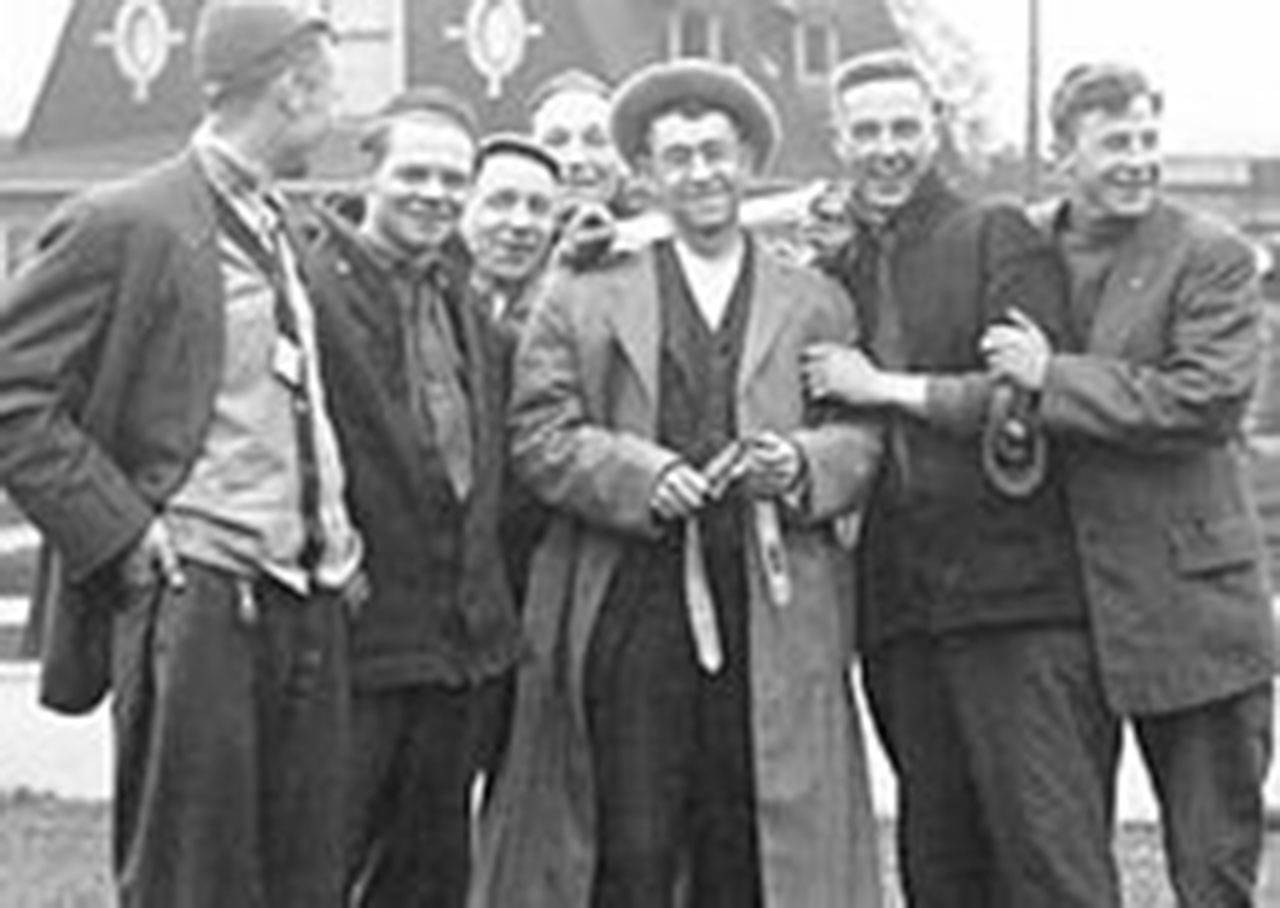Awed by the diverse marine life of the San Juans in 1903, Trevor Kincaid established a field station near Friday Harbor. Since those early rustic beginnings, the University of Washington Marine Laboratories has grown into an invaluable facility.
“The labs is this hidden little gem that the public doesn’t really know about,” said Deborah Giles, research director of the Center for Whale Research and professor of the Marine Mammals of the Salish Sea course offered at the labs last spring.
During those early days, at the turn of the century, a dozen students slept in tents and shared one rowboat to gather specimens. Other boats, according to the “Historical Centennial Timeline for the University of Washington’s Marine Laboratories,” were later acquired. While these field studies only lasted about six weeks, the researchers were generally welcomed by islanders.
“It is an institution Friday Harbor should feel proud of and should foster by making it as pleasant as possible for the directors and students. Considered from an advertising point-of-view it is one of the best mediums the islands could wish for,” a Friday Harbor Journal reporter wrote over 100 years ago.
According to the historical centennial timeline, the original “Labs Open House” was held in 1929, giving community members an opportunity to glimpse the work of these researchers, and ask them questions. An open house is still held every year, drawing hundreds of people annually, including wide-eyed children who get to see, perhaps for the first time, live starfish, sea cucumbers and other invertebrates.
Opening their doors to the public occasionally isn’t the only way the labs contribute to the community. The latest benefit, if Giles has her way, will be producing informational handouts on several key issues impacting the Salish Sea.
The Marine Mammals of the Salish Sea course taught by Giles consisted of six sophomore and junior college students. For the class to be creditworthy, Giles was required to provide a certain amount of hours researching and writing, thought students had this skills already. She designed a program that not only included those requirements, but would push her students to be very succinct, and produce brochures.
“It was actually something I came up with when I taught at [UC] Davis,” Giles explained.
Each of the brochures her class produced hits on current local hot topics, several of them dealing with the plight of Southern resident orcas, also known as J, K, and L pods, that frequent the Salish sea. Titles include:
“Noise Pollution in the Salish Sea,” “Impacts of Vessel Activities on Marine Mammals in the Salish Sea,” “Human Chemical Impacts on the Salish Sea Killer Whales,” “How Washington Dams are Starving our Killer Whales,” “Impacts of Vessel Activities on Marine Mammals in the Salish Sea,” and one even asks “Why Conserve the Whale?”
The project exceeded both the students and Giles’ expectations. She would like to refine the brochures, print them and have them publicly accessible.
“As a citizen, or naturalist, how do you explain noise pollution quickly?” she asked. Should they become available for public use, these brochures would help solve these problems. For example, if they were at the San Juan Chambers office, and a tourist came in with questions, staff could point to the brochure for answers. “Noise Pollution in the Salish Sea” includes statistics on how sound travels underwater, the effect that has on Southern residents, as well as what can be done and where to go for more information. Visitors and locals would benefit from having those facts readily available.
To ensure a high-quality product, these brochures were critiqued the last day of class by citizens and experts.
“These are too good to sit on a shelf,” Giles said.
This fall Giles will be teaching a basic biology course. Her students will be working with first graders as part of the labs’ partnership with local schools called the Friday Harbor Labs Science Outreach Program K-12. This program gives kindergarten through 12 graders a chance for hands on science. To learn more, visit depts.washington.edu/fhlk12/.
Being a part of the lab’s community of students, researchers and faculty have been incredible, Giles said. She also noted that bringing her knowledge of Southern resident orcas through her work at the Center for Whale Research helped bridge studies between invertebrates and vertebrates, resulting in increased knowledge of the Salish Sea as a whole.
“We are connecting the east, (Friday Harbor, the location of the labs) with the west (the side of the island where orcas have traditionally frequented) and blending research of micro and mega fauna within the Salish Sea. I love having a role in that,” said Giles.
This information, in turn, helps the community members that live here. The brochure “Human Chemical Impacts on the Salish Sea Killer Whales,” details, for example, how PCB’s (polychlorinated biphenyls) are absorbed by phytoplanktons, and work their way up the food chain to salmon and orcas. PCB’s remain in the orca’s system and build up as they eat more and more contaminated fish, causing serious health issues. Understanding that interspecies connection is helpful to preserve the whales, which helps the locals earning a living in eco-tourism.
“The labs offer these amazing classes, and is an amazing resource,” Giles said. “It really is a benefit to the community.”
For more info about the labs visit fhl.uw.edu. For more information about the Center for Whale Research, visit www.whaleresearch.com.




